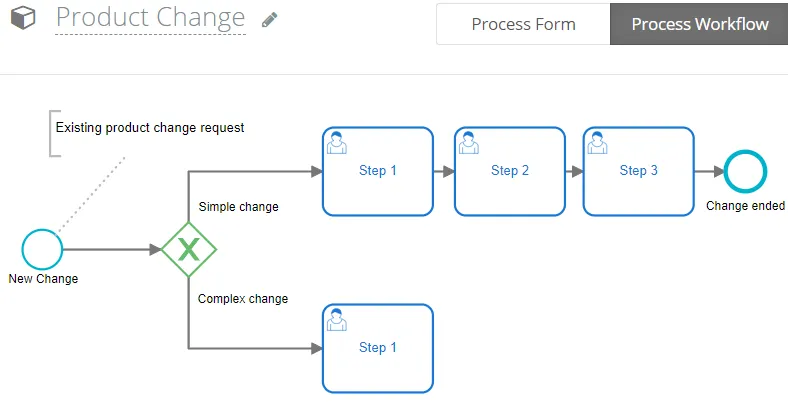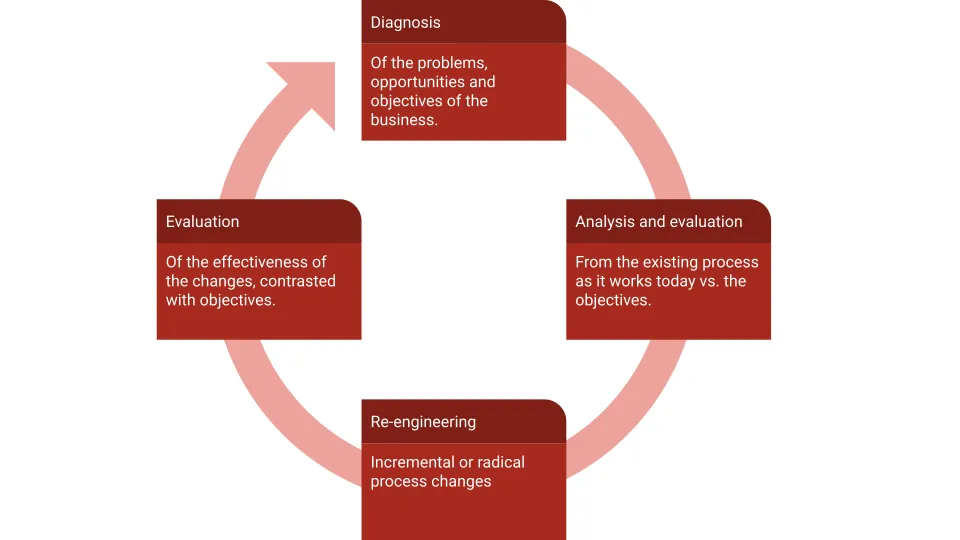Process reengineering and redesign.
Blog: Flokzu
Process reengineering originated in the 1990s and focused on the analysis and design of an organization’s workflows and business processes. The goal has always been to improve the performance of the processes that support the organization’s operations.
To achieve this, process reengineering initially proposed to rethink as deeply as possible the way the organization works, and therefore its processes, questioning all paradigms and entrenched practices. The aim was to improve customer service, offer better products, reduce operating costs and increase competitiveness, even making radical changes.
Such a radical approach came under heavy criticism, based on some resounding failures and misuse of the discipline (source: Wikipedia). From then on, it was accepted that “not everything old is so bad”, and the approach was softened. Work began on optimizing existing processes, but with a focus on continuous improvement and not on introducing such radical changes. This evolved approach is now known as Business Process Management (BPM).
This explains the common origin of both disciplines, and hence why they share so many concepts and practices. We will now look at the key aspects of Business Process Reengineering, which are relevant to any business process improvement initiative:

Diagnosis of problems and opportunities
The first step in process reengineering is to understand what the problems are, and what opportunities for improvement exist. Naturally, the objectives of the business and those elements that are its competitive differentials must be considered.
In order to obtain a good diagnosis, there are several tools that can – and should – be used, such as:
- Brainstorming, involving employees but also customers and suppliers.
- Benchmarking against competitors or similar companies.
- Matrices of activities with problems.
- Histograms to see dispersion of key indicators.
- Customer surveys, especially if they are demanding and want to strengthen the relationship with our company.
- Interviews with suppliers, especially if they have experience in the field working with our competitors.
Analysis and evaluation of the existing process
Once the problems have been identified, it is time to analyze in detail the process in question to evaluate any deviations from the business objectives.
It is very important at this stage to use objective key performance indicators (KPIs), and not subjective perceptions that may bias decisions. Process reengineering must be based on unobjectionable measures and not on individual opinions.
Some of the most important elements that should be identified when evaluating the process to be improved are:
- Owner of the process and responsible for its improvement.
- Objective of the process, or in other words, what does it contribute to the business?
- Diagram of the process, either in a formal notation or at least by means of a drawing on paper.
- Critical paths (branches of the process that present the most delays or difficulties).
- Key indicators of its health and performance (number of instances completed per day, process time, etc.).
- Process outputs, or in other words, what are the deliverables at the end of the process (whether final or inputs to other processes).
Process reengineering and redesign.
The next – and most interesting – step is process reengineering or process redesign. For this, it is important to:
- Identify the main objective to be achieved, what is the problem to be solved?
- Define the objective KPIs, to demonstrate that the problem was solved (or not).
- Strategic plan with the necessary steps to achieve it, the changes to be made, who will lead them, who will be affected, who will be sponsors.
- Redesign of the process, with its graphical and formal representation. Whether with the standard BPMN notation or another, a clear map of the new process must be available, to understand and discuss it.
- Implementation of the new process in the organization in a process management system (BPMS) or other automation tool whenever possible.
- Below is a (very simple) example of a process modeled with the BPMN standard in Flokzu BPM Suite:

Effectiveness evaluation and corrections
As important as implementing changes and a deep or incremental reengineering of the process, is to evaluate its effectiveness. To do so, it is necessary to:
- Measure the KPI’s of the process and contrast them with the defined business objectives.
- Analyze the deviations and identify the causes. Did the changes have the desired effect? Maybe they were good but not enough?
- Study the impact on other indicators that were not foreseen. Did any indicator worsen that should not have been affected?
- Define measures and adjustments to further improve the process and restart the cycle.
Agility to restart the process reengineering cycle
The continuous improvement cycle described above is, of course, desirable to be executed many times in a short period of time. But for this, it is a mandatory requirement that we have agility. The most important factor in achieving this agility is the technological tool used.
In the case of production processes, the technological tool could involve the production chain, which naturally will not be quick or agile to modify.
In the case of administrative processes, the scenario is friendlier, since the technological tool may be a computer system, in particular a Business Process Management System (or simply BPM Suite). If this tool is low-code / no-code, i.e. it does not require programming or computer knowledge to operate, it will allow implementing changes much faster, measuring their results, and restarting the continuous improvement cycle.
Conclusions
Radical process reengineering has now evolved towards continuous process improvement, accepting that “not everything is wrong”, although there are always opportunities for improvement.
In this post, we have identified the main elements for a successful process reengineering strategy. Human factors (owner of the process, affected by the change), business factors (competition, customers), business goals (measured with KPI’s), and the use of a standard such as BPMN are key success factors.
When it comes to administrative processes, the use of a BPM Suite that does not require programming (low-code / no-code) such as Flokzu, greatly facilitates the re-engineering of business processes, reducing the time and costs involved. The possibility of quickly introducing changes and measuring their results is key to achieve the desired improvements in less time.
The post Process reengineering and redesign. appeared first on Flokzu.
